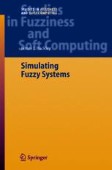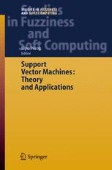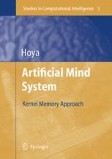Search
Search Results
-
Class Prediction with Microarray Datasets
Microarray technology is having a significant impact in the biological and medical sciences and class prediction will play an increasingly important...
-
SYNESTHETIC ANALYSIS OF AUDIO-VISUAL DATA
Interaction between two perceptual modalities, seeing and hearing, their interaction and mutual reinforcement in a complex relationship was a subject...
-
Fuzzy Subsets and Fuzzy Subgroups
The pioneering work of Zadeh on fuzzy subsets of a set in [53] and Rosenfeld on fuzzy subgroups of a group in [43] led to the fuzzification of...
-
Fuzzy Caley's Theorem and Fuzzy Lagrange's Theorem
We begin our discussion with properties of normal fuzzy subgroups. Fuzzy analogs of some group theoretic concepts such as cosets, characteristic...
-
Introduction
This book is written in two major parts. The first part includes the introductory chapters consisting of Chaps. 1 through 8. In part two, Chaps....
-
Machine Shop II
This chapter continues the machine shop model discussed in the previous chapter. Management is considering a radical change in the machine shop...
-
Inventory Control I
This single item multi-period inventory model is shown in Fig. 16.1. This problem will be expanded and also studied in the next chapter. These...
-
Machine Servicing Problem
The machine servicing problem is shown in Fig. 14.1 and a basic description can be found in almost any operations research book ([1] p. 573(....
-
A Bus Stop
We have plenty of complaints about a certain bus stop. People can not get on the bus because when it stops it is already too crowded. We could add...
-
Bank Teller Problem
This is a classical problem in queuing theory: should there be multiple queues, one for each teller in a bank, or should we have one single queue for...
-
Genetic Algorithms Based Hybrid Intelligent Systems
The oldest branch of Evolutionary Computation, namely GA, is at the same time the used in real-world applications of HIS. Chapter 8 of the book tries...
-
The Challenge of Hierarchical Difficulty
Thus far, we have examined the Bayesian optimization algorithm (BOA), empirical results of its application to several problems of bounded difficulty,...
-
Life Insurance: New Account Model
This problem was derived from an example in [1]. The system is shown in Fig. 15.1. This figure shows how this insurance company handles an...
-
Clustering with Intelligent Techniques
Cluster analysis is a technique for grou** data and finding structures in data. The most common application of clustering methods is to partition a...
-
New Trends of Develo** Hybrid Intelligent Systems – AIS Hybridization and DNA-Hybridization
As already mentioned in Chap.1, the use of biologically inspired CI techniques play a crucial role for the hybridisation at any level of HIS features...
-
Componentwise Least Squares Support Vector Machines
This chapter describes componentwise Least Squares Support Vector Machines (LS-SVMs) for the estimation of additive models consisting of a sum of...
-
Support Vector Machines for Signal Processing
This chapter deals with the use of the support vector machine (SVM) algorithm as a possible design method in the signal processing applications. It...
-
Theoretical and Practical Model Selection Methods for Support Vector Classifiers
In this chapter, we revise several methods for SVM model selection, deriving from different approaches: some of them build on practical lines of...
-
Adaptive Discriminant and Quasiconformal Kernel Nearest Neighbor Classification
Nearest neighbor classification assumes locally constant class conditional probabilities. This assumption becomes invalid in high dimensions due to...
-
The Artificial Mind System (AMS), Modules, and Their Interactions
The previous two chapters have been devoted to establishing the novel artificial neural network concept, namely the kernel memory concept, for the...
